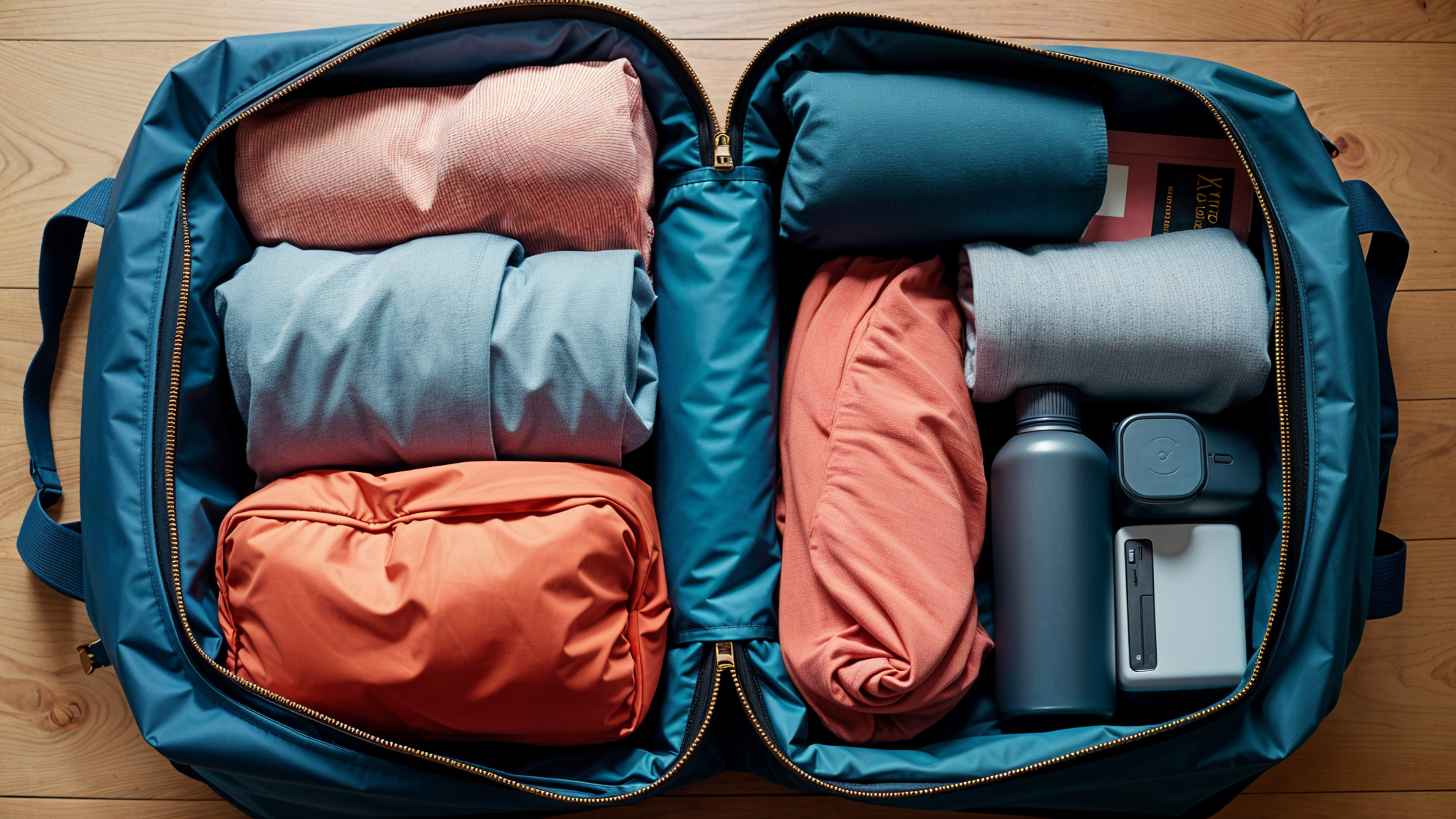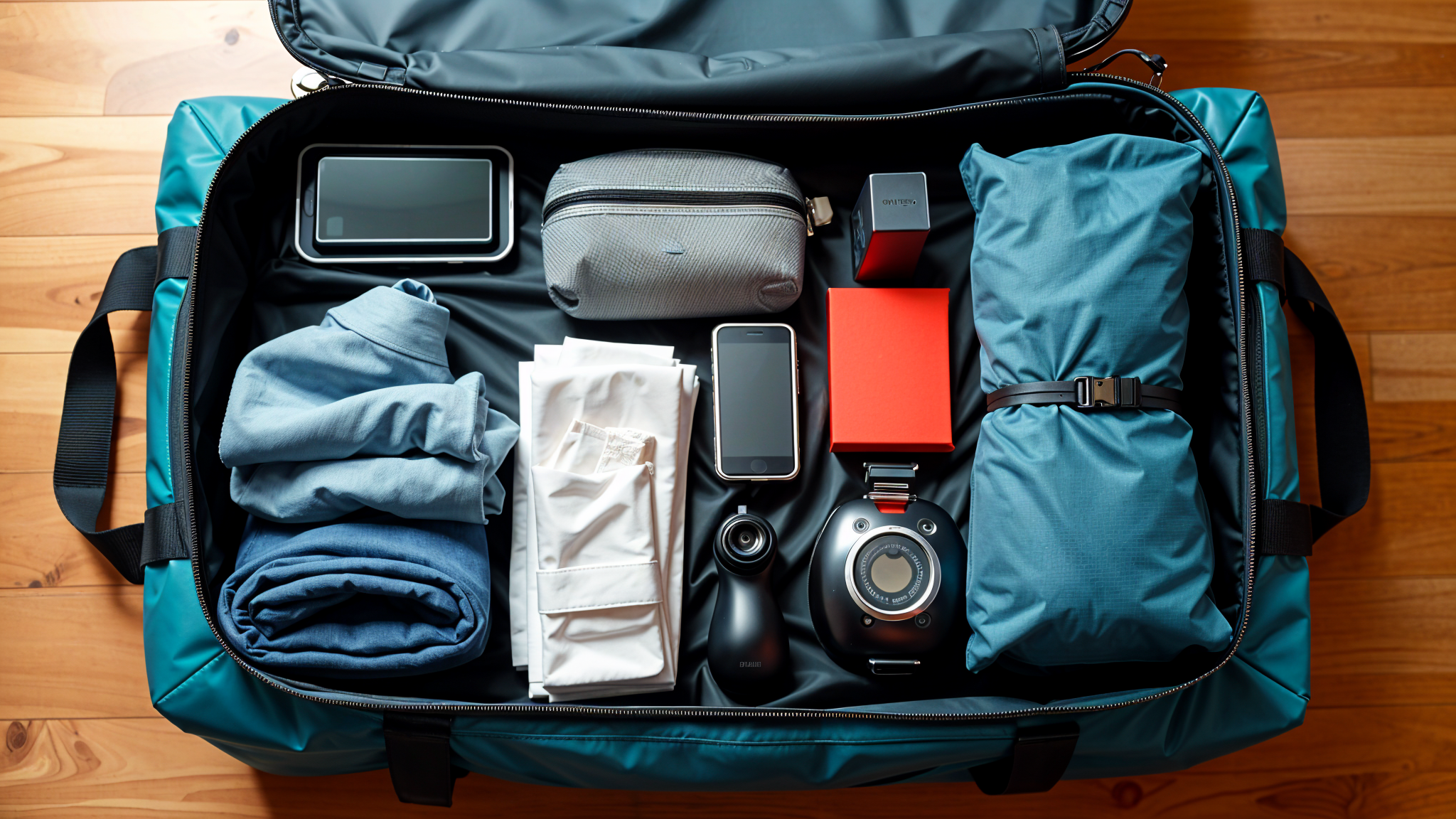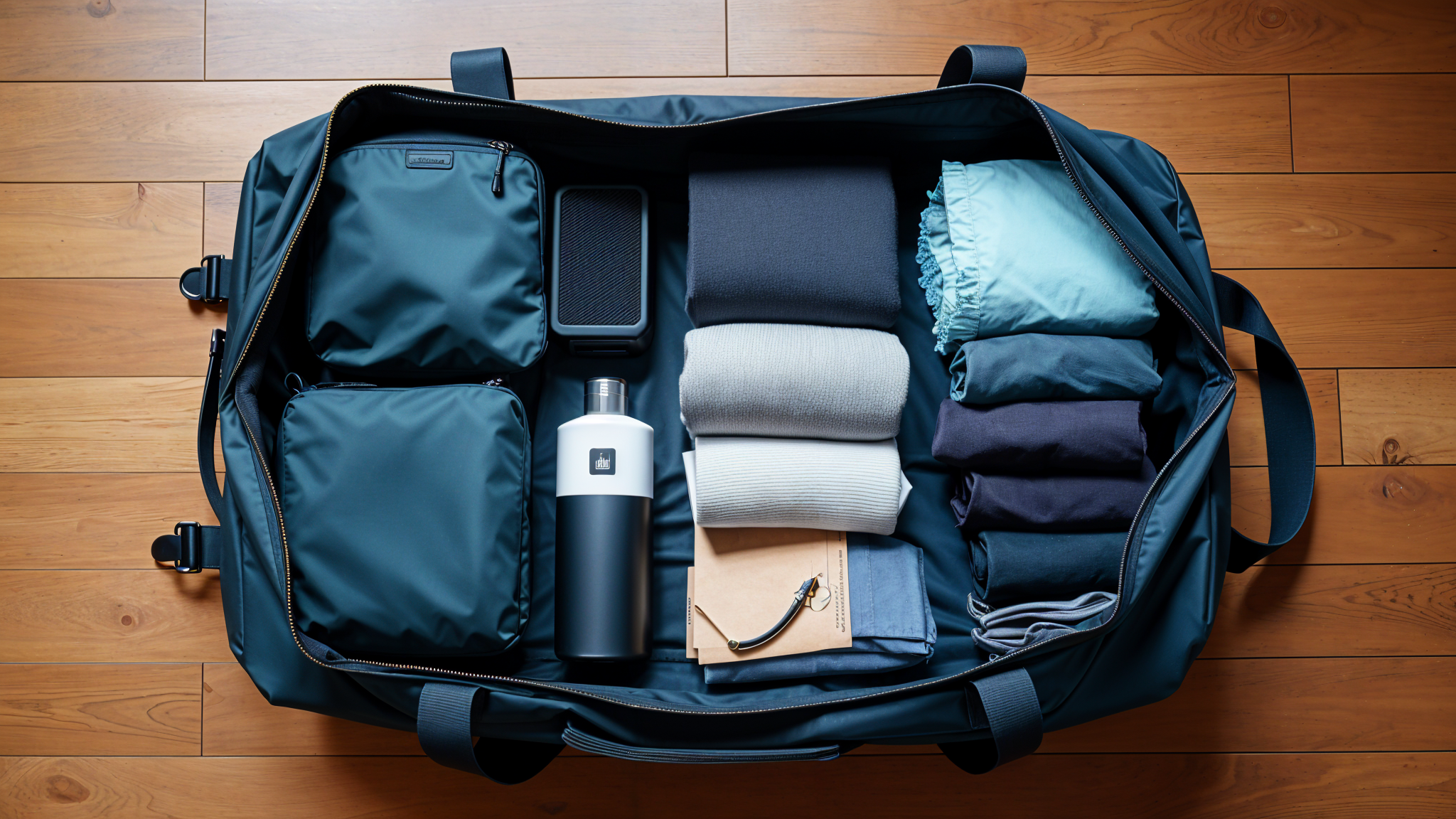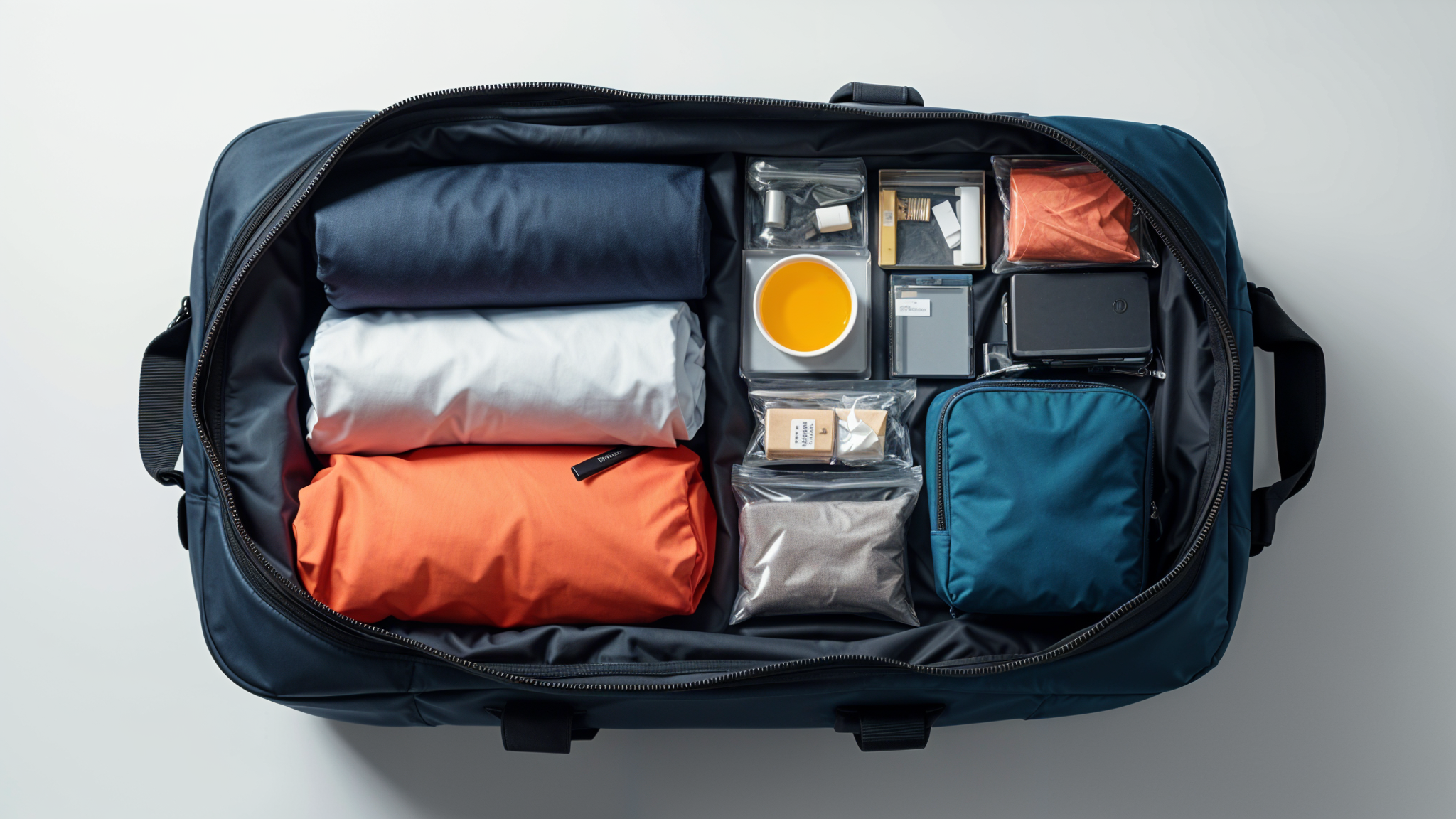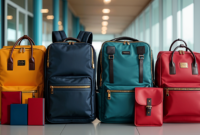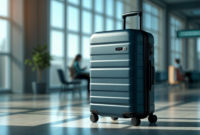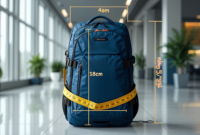Imagine effortlessly navigating through airports, hopping on trains, and exploring new destinations with just one versatile bag. That’s the freedom a well-packed duffel bag can offer. Duffel bags, known for their soft-sided, cylindrical design and spacious main compartment, are a traveler’s best friend. Their flexibility allows them to fit into tight spaces, their portability makes them easy to carry, and many even meet airline carry-on size restrictions, saving you time and baggage fees. However, the key to unlocking the full potential of your duffel lies in mastering the art of efficient packing.
A disorganized duffel bag can quickly turn your travel dreams into a chaotic nightmare. Rummaging through a jumbled mess for your passport or discovering your clothes are wrinkled beyond recognition can add unnecessary stress to your journey. But fear not! By implementing a few strategic packing techniques, you can transform your duffel bag from a source of frustration into a well-oiled travel machine.
This article will guide you through 6 essential tips to organize your duffel bag like a pro. You’ll learn how to maximize space with packing cubes, strategize your shoe storage, downsize and organize toiletries, prioritize essential documents, protect your electronics, and utilize a dedicated accessory bag. By adopting these techniques, you’ll not only reduce wrinkles and gain easier access to your belongings but also enjoy a lighter, more streamlined travel experience. Whether you’re a seasoned traveler or just starting your adventures, these tips will empower you to make the most of your duffel bag and embrace the freedom of traveling smarter, not harder.
1. Packing Cubes: Your Duffel Bag’s Best Friend
Enter the packing cube – a traveler’s secret weapon for conquering duffel bag chaos. These lightweight, zippered fabric containers are designed to compartmentalize your clothes and maximize space within your bag. Think of them as drawers for your duffel, bringing order and efficiency to your packing game. By utilizing packing cubes, you’ll not only find yourself with more room but also enjoy a stress-free travel experience with wrinkle-free clothes and easy access to everything you need.
Packing cubes offer a multitude of benefits. Firstly, they compress your clothes, allowing you to fit more into your duffel bag. This is especially useful for bulky items like sweaters or jeans. Secondly, they keep your clothes organized and prevent them from shifting during transit, which means less rummaging and fewer wrinkles. Finally, they make packing and unpacking a breeze. Simply pull out the cube containing the clothes you need, and you’re good to go!
Not all packing cubes are created equal. Compression cubes are fantastic for squeezing out excess air and minimizing the volume of bulky items. Mesh cubes, on the other hand, offer breathability and allow you to see what’s inside without having to unzip them. Consider using a combination of both types to cater to your specific packing needs.
Forget folding – rolling is the way to go when packing with cubes. Rolling your clothes not only saves space but also significantly reduces wrinkles. Tightly roll each item and place it inside the designated cube. You’ll be amazed at how much more you can fit and how much smoother your clothes will look when you unpack.
When packing your cubes, aim to fill them completely to maximize space utilization. Arrange the cubes within your duffel bag strategically, placing heavier items like shoes at the bottom for stability. Utilize the gaps between cubes for smaller items like toiletry bags or electronics pouches. This “Tetris” approach ensures a snug fit and prevents items from shifting during travel.
To further streamline your packing process, consider labeling or color-coding your packing cubes. This simple step makes it incredibly easy to identify the contents of each cube without having to unzip them. For example, you could use different colored cubes for tops, bottoms, and undergarments, or label them with categories like “Day 1 Outfit” or “Beachwear.”
2. Strategize Your Shoe Storage
Shoes can be a packing puzzle, often bulky and prone to soiling your clothes. However, with a strategic approach, you can efficiently pack your footwear and keep your duffel bag organized. Start by carefully selecting the shoes you’ll bring. Aim for versatility – choose shoes that can be worn for multiple occasions, like a comfortable pair of walking shoes that can also be dressed up for dinner. Limit yourself to 2-3 pairs at most, depending on the length and purpose of your trip.
To protect your clothes from dirt and scuff marks, always pack your shoes in individual bags. Shoe bags are ideal, but reusable shopping bags or even plastic bags work in a pinch. This creates a barrier between your shoes and your clothes, ensuring everything stays clean and fresh.
When packing your duffel bag, consider the weight and stability of your belongings. Place your shoes at the bottom of the bag or along the sides. This creates a solid foundation and prevents lighter items from getting crushed. It also helps distribute the weight evenly, making your bag easier to carry.
Maximize space within your shoes by stuffing them with smaller items. Socks, underwear, or even rolled-up t-shirts can be tucked inside your shoes, utilizing otherwise empty space. This not only saves room but also helps your shoes maintain their shape during travel.
If your duffel bag has dedicated shoe compartments, take advantage of them! These compartments are designed to keep your shoes separate from your clothes, ensuring cleanliness and organization. Some duffel bags even have separate compartments for each shoe, preventing them from rubbing against each other and getting damaged.
3. Downsize and Organize Toiletries
Your toiletries are essential for travel, but they can quickly become a source of frustration if not packed efficiently. When traveling with a duffel bag, especially if you’re aiming for carry-on only, mastering the art of toiletry organization is crucial. Start by embracing the TSA’s 3-1-1 liquids rule: all liquids, gels, and aerosols must be in containers no larger than 3.4 ounces (100ml), and all containers must fit into a single, quart-sized, clear plastic bag. Invest in a set of TSA-approved, reusable toiletry containers to make this process seamless.
Say goodbye to bulky, full-sized shampoo bottles and hello to space-saving efficiency! Decant your favorite products into smaller, travel-sized containers. This not only frees up valuable space in your duffel bag but also reduces the overall weight you have to carry. You’ll be surprised at how much lighter your bag feels when you ditch those heavy, half-empty bottles.
A waterproof toiletry bag is your best friend when it comes to preventing leaks and spills. Choose a sturdy, clear bag that allows for easy visibility of its contents during security checks. For added protection, consider double-bagging liquids in zip-top bags within the toiletry bag. When packing your duffel, place your toiletry bag at the top or in an easily accessible pocket to minimize the risk of leaks affecting your clothes or other belongings.
Transform your toiletry bag from a jumbled mess into an organized oasis by categorizing your items. Utilize small pouches or dividers to separate skincare, haircare, makeup, and dental care products. This makes it easy to find what you need without having to rummage through the entire bag. You can even use different colored pouches for each category for quick identification.
To further minimize liquids and streamline your packing, consider switching to solid toiletries or travel-sized versions. Shampoo bars, conditioner bars, and solid deodorants are excellent alternatives to their liquid counterparts and are not subject to the 3-1-1 liquids rule. Travel-sized versions of toothpaste, sunscreen, and other essentials are readily available and take up minimal space.
4. Prioritize Essential Documents
When you’re navigating airports or crossing borders, the last thing you want is to be frantically digging through your duffel bag for your passport or boarding pass. Keeping your essential documents easily accessible is paramount for a smooth and stress-free travel experience. Instead of burying these crucial items deep within your bag, designate a secure and readily available spot for them, preferably in an outside pocket of your duffel bag. This allows you to quickly retrieve them when needed without having to unpack your entire bag.
To keep your documents organized and protected, consider using a clear plastic pouch or a dedicated travel wallet. These handy tools not only keep your papers together but also make it easy to see what you have at a glance. You can store your passport, visa, flight tickets, boarding passes, travel insurance information, and any other important documents in this pouch or wallet, ensuring they are always within reach.
As an added layer of security, make digital copies of all your essential documents and store them securely in the cloud or on a password-protected device. This way, even if you lose your physical documents, you’ll have backups readily available. You can also email copies to yourself or a trusted friend or family member.
Here’s a checklist of essential travel documents to ensure you’re prepared for your journey:
- Passport (valid for at least 6 months beyond your return date)
- Visa (if required for your destination)
- Flight tickets (printed or electronic)
- Boarding passes (printed or electronic)
- Travel insurance information
- Driver’s license or other form of identification
- Hotel or accommodation reservations
- Emergency contact information
- Any other relevant documents specific to your trip (e.g., vaccination certificates, medical prescriptions)
Remember, your essential documents and valuables should be kept in a safe and easily accessible location. Avoid placing them in the main compartment of your duffel bag where they could be vulnerable to theft or damage. Instead, utilize a secure outside pocket or a dedicated travel wallet that you can keep close to you at all times.
5. Protect Your Electronics
Your electronics are essential companions for travel, providing entertainment, communication, and access to important information. However, they’re also delicate and vulnerable to damage during transit. The bumps, jostles, and pressure within a duffel bag can easily lead to cracked screens, damaged hard drives, or malfunctioning components. Taking proactive steps to protect your electronics is crucial for ensuring they arrive at your destination in perfect working order.
Investing in a padded laptop sleeve or case is a non-negotiable for any traveler carrying a laptop or tablet. These protective layers provide a cushioning buffer against impacts, preventing damage to your device’s delicate screen and internal components. Consider a hard-shell case for maximum protection or a lightweight, padded sleeve for a balance of protection and portability. For smaller devices like smartphones or e-readers, a padded pouch or a dedicated compartment within your accessory bag can offer sufficient protection.
When packing your duffel bag, think strategically about where to place your electronics. If your bag has a dedicated, padded compartment designed for a laptop or tablet, utilize it! This not only provides extra protection but also keeps your device easily accessible. If a dedicated compartment isn’t available, place your electronics in their protective sleeve towards the center of your bag, surrounded by softer items like clothing. This creates a buffer zone, minimizing the risk of damage if your bag is dropped or jostled.
Tangled cords and chargers can be a frustrating travel companion. Keep your electronics organized and prevent damage to cables by using cable organizers or small pouches. Neatly coil your charging cables, earbuds, and other wires and place them in individual pouches or compartments within your electronics organizer. This not only keeps them tangle-free but also makes them easy to find when you need them.
Consider adding a portable power bank to your travel arsenal. These compact devices provide a readily available power source for charging your phone, tablet, or other USB-powered devices on the go. This is especially useful during long flights, train journeys, or when exploring destinations with limited access to power outlets. A fully charged power bank can be a lifesaver when your phone battery is running low and you need to access maps, boarding passes, or other essential information.
6. Utilize a Dedicated Accessory Bag
Think of an accessory bag as your duffel bag’s mini-me – a compact organizational powerhouse for all those smaller essentials that can easily get lost in the shuffle. From jewelry and medications to portable chargers and snacks, an accessory bag keeps these items contained, organized, and readily accessible. No more frantic rummaging through your entire duffel bag when you need a quick dose of ibuprofen or your phone charger!
When choosing an accessory bag, prioritize lightweight and compact options that won’t add unnecessary bulk to your luggage. Look for a bag with a secure zipper closure and consider features like multiple compartments or pockets for enhanced organization. A small, foldable bag is ideal as it can be easily packed away when not in use.
Transform your accessory bag into an organized haven by utilizing small pouches or dividers. These create designated spaces for different categories of items, such as separating jewelry from electronics or medications from snacks. This not only keeps things tidy but also makes it incredibly easy to find what you need without having to unpack the entire bag.
If you’re carrying valuable items like jewelry or electronics in your accessory bag, consider adding an extra layer of security. Choose an accessory bag with a lockable zipper or utilize small, lockable pouches within the bag to safeguard your valuables. You can also place the accessory bag in a secure location within your duffel bag, such as a zippered inner pocket or closer to the center of the bag for added protection.
For added peace of mind, especially when traveling to destinations with unpredictable weather or if you’re carrying items sensitive to moisture, consider using a waterproof or water-resistant accessory bag. This will help protect your belongings from accidental spills or unexpected rain showers, ensuring everything stays dry and in perfect condition.
The Bottom Line: Travel Smarter, Not Harder
By mastering these 6 duffel bag packing tips, you’re well on your way to transforming your travel experience. Remember the power of packing cubes to compartmentalize your belongings and maximize space. Strategically pack your shoes to protect your clothes and maintain stability. Downsize and organize your toiletries to comply with airline regulations and save space. Prioritize essential documents by keeping them easily accessible in a designated pouch or pocket. Protect your electronics with padded sleeves and cable organizers. Utilize a dedicated accessory bag for smaller essentials, and consider using a laundry bag to separate dirty clothes.
Efficient packing translates to less stress, easier navigation through airports and train stations, and more space in your bag for souvenirs or unexpected purchases. You’ll be able to focus on enjoying your journey rather than wrestling with a disorganized and overflowing duffel bag.
These tips are a foundation – adapt them to your unique travel style and needs. Experiment with different packing methods and find what works best for you. Consider unpacking essential items upon arrival at your destination to avoid rummaging through your bag later.
Embrace the freedom and convenience that a well-organized duffel bag offers. Travel smarter, not harder, and enjoy the journey as much as the destination.

